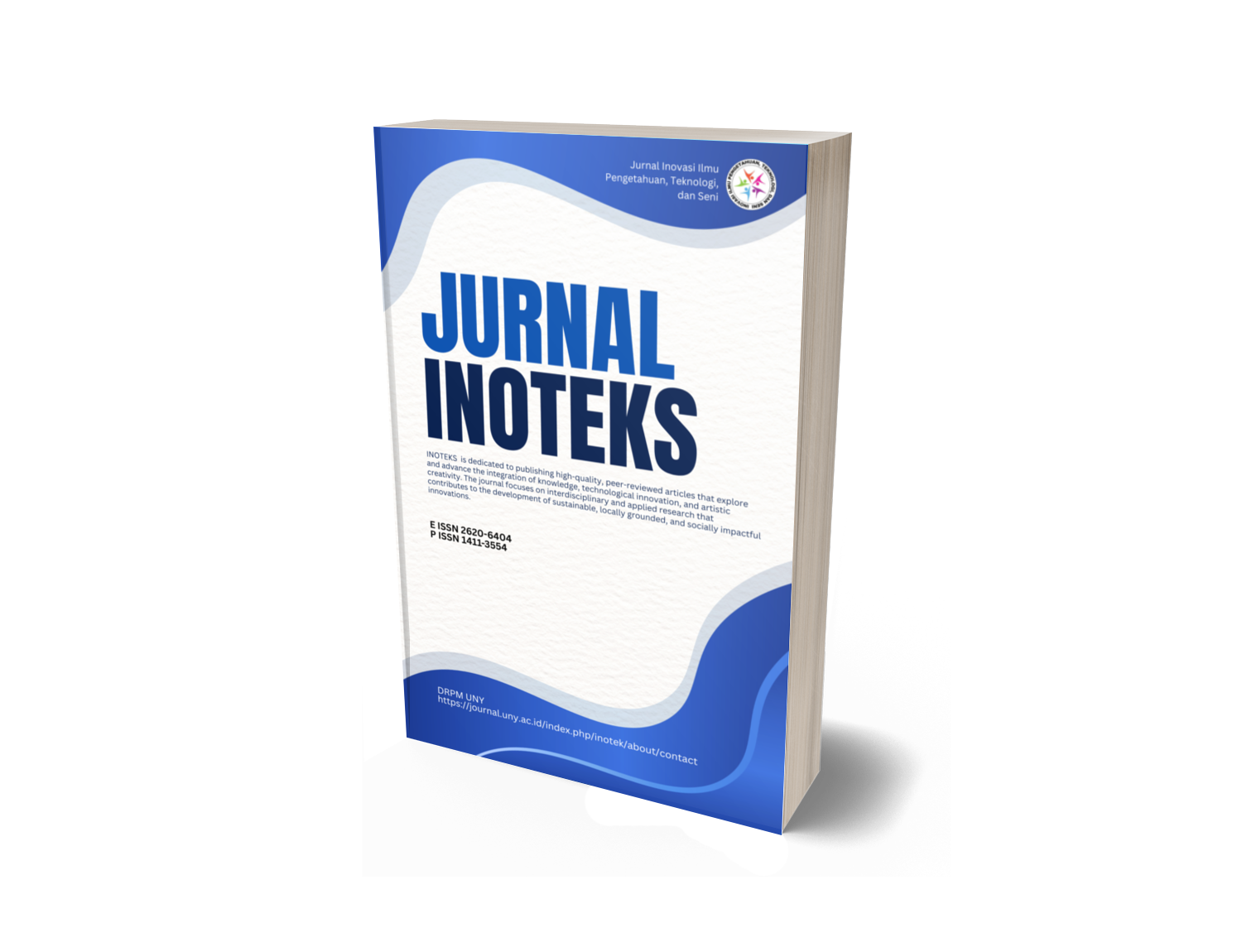PEMANFAATAN CAMPURAN BORAKS DAN ASAM BORAT SEBAGAI BAHAN PENGAWETAN KAYU TERHADAP SERANGAN RAYAP
DOI:
https://doi.org/10.21831/ino.v17i1.3098Abstract
This research aims to: (1) find out the initial effects the use of the mixed borax and boric acid as a wood preserving material against termite attacks observed visually and based on its weight loss, and (2) find out the soaking duration and the mixed borax and boric acid concentration which have the most effective initial effects to preserve wood. The research method applies an experimental approach. The research samples are sengon woods of 5/7-15 cm and the wood preserver of the mixed borax and boric acid. The ratio of the mixed borax and boric acid concentration is 1.54 to 1.00. The preserving material concentration of 5% applies to the 15 testing samples of group A, 7.5% to the 15 testing samples of group B, and 10% to the 15 testing samples of group C. Each testing sample is treated with soaking for 1 hour, 2 hours, and 3 hours. As a control group is the 5 testing samples of group D. The research data of the visual observation are collected by a field direct observation for 48 days, while the weight loss data of each testing sample of each treatment are collected by weighing in the Construction Material Laboratory. The research data are analyzed using the quantitative descriptive technique. The research result visually shows that among all testing samples, the most extreme condition and eaten by termites exists on group D without any treatment. Based on the weight loss of each testing sample, obviously group D is eaten by termites of the largest persentage compared to the treatment A, B, and C. The soaking treatment difference does not appear on the treatment A with the preserving material concentration of 5%. However, the soaking duration of the treatment B (7.5%) and C (10%) have very good initial effects against wood termite attacks, especially group C with the soaking duration of 3 hours. Generally, the initial effects of the chemical preserving material of the mixed borax and boric acid as a wood preserving material, especially of the treatments A, B, and C, have good effects against termite attacks. Among the three treatments, the treatment C with the preserving material concentration of 10% and the soaking duration of 3 hours is the most effective one against wood termite attacks.
Keywords: wood preserving, borax, boric acid, and termite
Keywords: wood preserving, borax, boric acid, and termite
Downloads
How to Cite
Darmono, D., Atun, S., & Prasetyo, S. (2015). PEMANFAATAN CAMPURAN BORAKS DAN ASAM BORAT SEBAGAI BAHAN PENGAWETAN KAYU TERHADAP SERANGAN RAYAP. INOTEKS: Jurnal Inovasi Ilmu Pengetahuan,Teknologi, Dan Seni, 17(1). https://doi.org/10.21831/ino.v17i1.3098
Issue
Section
Articles
Citation Check
License
- Authors certify that the work reported here has not been published before and contains no materials the publication of which would violate any copyright or other personal or proprietary right of any person or entity.
- Authors transfer or license the copyright of publishing to Jurnal Civics: Media Kajian Kewarganegaraan to publish the article in any media format, to share, to disseminate, to index, and to maximize the impact of the article in any databases.
- Authors hereby agree to transfer a copyright for publishing to Jurnal Civics: Media Kajian Kewarganegaraanas a Publisher of the manuscript.
- Authors reserve the following:
- all proprietary rights other than copyright such as patent rights;
- the right to use all or part of this article in future works of our own such as in books and lectures;
- use for presentation in a meeting or conference and distributing copies to attendees;
- use for internal training by author's company;
- distribution to colleagues for their research use;
- use in a subsequent compilation of the author's works;
- inclusion in a thesis or dissertation;
- reuse of portions or extracts from the article in other works (with full acknowledgement of final article);
- preparation of derivative works (other than commercial purposes) (with full acknowledgement of final article); and
- voluntary posting on open web sites operated by author or author's institution for scholarly purposes, but it should follow the open access license of Creative Common CC BY-NC-SA License.









